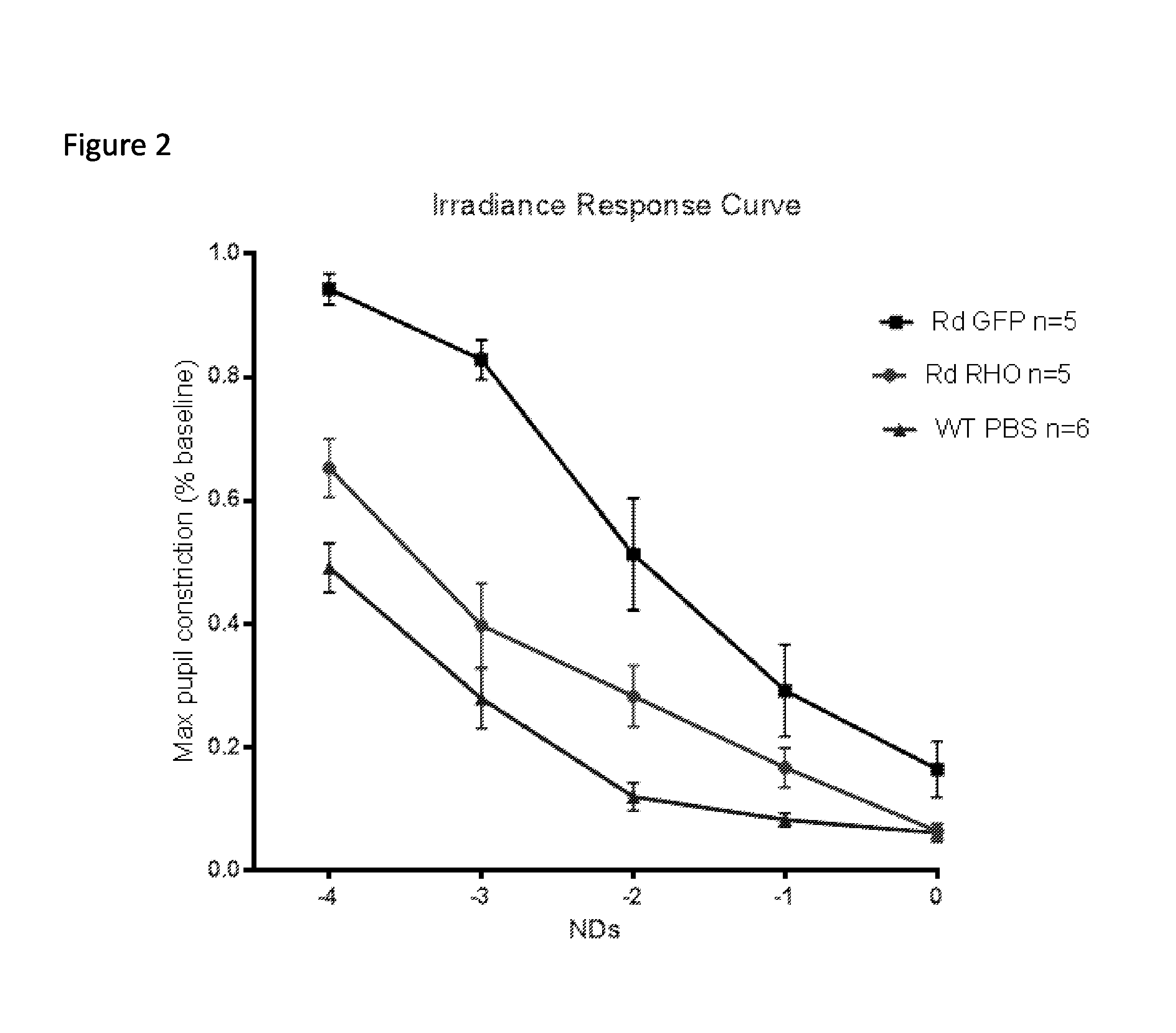Treatment of retinal degeneration using gene therapy
a gene therapy and retinal degeneration technology, applied in the direction of enzymology, peptides, drug compositions, etc., can solve the problems of loss of peripheral vision and night vision, loss of central and colour vision, loss of detailed and colour vision,
- Summary
- Abstract
- Description
- Claims
- Application Information
AI Technical Summary
Benefits of technology
Problems solved by technology
Method used
Image
Examples
examples
[0124]In this study the feasibility of restoring light responsiveness to blind rd1 retinas by expressing human rod opsin in surviving inner retinal neurons using intravitreal AAV gene therapy was investigated. Both untargetted (neuron non-selective) and targeted (selective to ONBP cells) delivery was studied. Furthermore, the properties of restored responses in vivo and the ability of treated blind mice to resolve more sophisticated image processing including full field flickers, contrast detection, and naturalistic scenes were examined. Both untargetted and targeted ectopic rod opsin successfully recovers vision through a diverse visual code involving both ON and OFF pathways were found. Restored responses are transmitted beyond the retina into CNS visual pathways and function under the light intensity range of normal cone (and rod) vision as well as under light adapted conditions. The responses are robust enough to lead to light-induced locomotor behaviour in treated mice under il...
PUM
| Property | Measurement | Unit |
|---|---|---|
| time | aaaaa | aaaaa |
| time | aaaaa | aaaaa |
| time | aaaaa | aaaaa |
Abstract
Description
Claims
Application Information
 Login to View More
Login to View More - R&D
- Intellectual Property
- Life Sciences
- Materials
- Tech Scout
- Unparalleled Data Quality
- Higher Quality Content
- 60% Fewer Hallucinations
Browse by: Latest US Patents, China's latest patents, Technical Efficacy Thesaurus, Application Domain, Technology Topic, Popular Technical Reports.
© 2025 PatSnap. All rights reserved.Legal|Privacy policy|Modern Slavery Act Transparency Statement|Sitemap|About US| Contact US: help@patsnap.com



